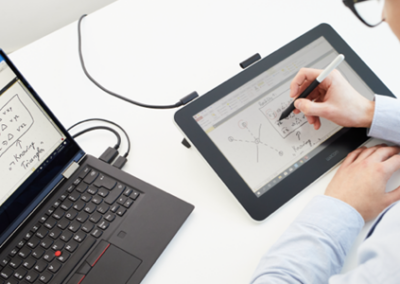The move to online learning has been a challenge for all educators, but particularly teachers of physical education (PE). Practical subjects are notoriously difficult to deliver online. Are you tempted to stick to paper-based exercises about theory and nutrition?
Leaving practical PE until your students are back at school may seem like the perfect option, however distance learning is here to stay. Now is the time to embrace the changes brought by online learning. You can still deliver engaging and effective PE lessons to students learning virtually. Here’s how to do it.
Use online PE resources
There are a vast range of online resources that don’t require equipment. From YouTube videos to workout sheets, there’s something to suit every class. You just have to find them.
Use social media to discover other physical education teachers, both in your area and around the world. You’ll find plenty, like the PE Specialist, are sharing their lesson plans and ideas. Use Pinterest searches to find organisations who have developed resources especially for distance teaching.
Some of our favourite online PE resources include:
- This Is PE: YouTube videos covering a range of skills
- Cosmic Kids Yoga: Fun story-based yoga sessions aimed at younger children
- Sworkit: Free to try with a range of customisable workouts for kids to choose from
- Get Kids Moving: YouTube superhero themed workouts for primary-aged students
- Go Noodle: Movement and mindfulness videos for younger students
- DAREBEE: Perfect for older students- an incredible range of resources including PDFs you can add to lesson plans
Modelling PE skills
Students can struggle with online PE lessons because they can’t see your demonstrations of skills and techniques. Replicate this experience by creating simple videos using Loom or Microsoft Stream. This lets you add a voiceover to videos, talk through still images, and add annotations using a Wacom pen tablet.
Creating a bank of videos gives you resources you can keep using for years. They’re perfect for setting as revision tools, using for homework tasks, and sharing with non-specialist colleagues.

Create choice of activity
Whilst students are distance learning, they can’t access the usual team games and equipment you have in school. That limits the tasks you can set, but there’s still plenty of ways to keep them active.
Give your students a wide range of activities to choose from. They could stick with the same activity each week or work through a list of challenges to get them trying new skills. Include choices that require no equipment, like running and HIT workouts, and others using kit they probably have at home, like football.
Set amounts of physical activity they need to complete every day or week. Students can record their sessions in activity logs with a comment about how they found it, their breathing, and heart rate. It’s great for students who want and need to exercise but struggle in front of other children in the classroom.
Your students could record themselves and share using the school’s social media accounts, an editable document through Google Drive, or a collaborative platform. Just remember to check safeguarding procedures and your school’s policies around image sharing.
Raise the profile of physical education
With rising levels of childhood obesity and increasingly sedentary lifestyles, it’s important to encourage students to be active. Set daily or weekly challenges for the entire school to try. It’s an opportunity to focus on general fitness, strength, and movement rather than rules of specific games.
Try adding your challenges to the school website or sharing through social media. Make short videos of you trying the challenge so they see your modelled example. Have fun and utilise the everyday items they’ll find at home like weightlifting with tins of soup, target practice with stones, and creating obstacle courses.
Send links to online materials for students to access in their own time. When you find a great resource, add it to a collaborative platform, like Google Classroom or Microsoft Teams to give students inspiration for extra activities to try.
Older students
Engaging younger children with online PE lessons is far easier than older students. You work harder to get them to engage.
Use competition to encourage students to get active. Rather than competing against each other, create self-competition and team activities where they need to collaborate. Try pitting year groups or entire classes against each other to see who comes out victorious.
Many resources for teaching PE are aimed at younger children rather than teenagers. Look out for websites like DAREBEE, mentioned earlier, that are pitched at adults but still include accessible step-by-step instructions and handy PDFs to download. They are perfect for older students and those struggling with a poor internet connection.
In summary
No equipment, social distancing, and a lack out outdoor space. PE teachers must be inventive with online learning. Embracing the fun of physical activity and adding competition is one way of ensuring students still stay active whilst learning from home.
Teaching PE online is a challenge, but an opportunity too. It’s a chance to encourage students to take part in physical activities outside of your lessons. After all, students who thrive in PE aren’t built to sit at a desk all day.







